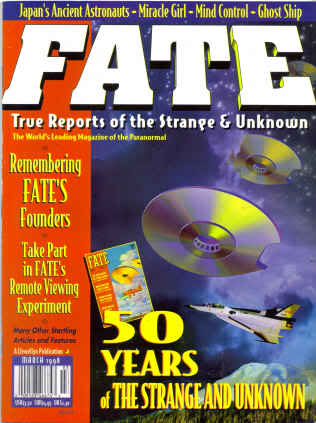Outer Phenomenon and Inner Journey – A Review of David Halperin’s Journal of a UFO Investigator
This review was originally published in 2011 through The Revealer, New York University’s online journal of religion and media.
–
Riddles chased mysteries, were chased by enigmas, around and around my brain.
–from Journal of a UFO Investigator (Viking Press, 2011)
On June 24, 1947 the U.S. Air Force pilot Kenneth Arnold witnessed a series of angular, wedge shaped objects skipping like saucers across the sky near his plane. Although he described them as angular or wedge-shaped, from his statements about “a pie tin cut in half” the news reports gleaned the word “Flying Saucer.” The media’s misrepresentation of his description stuck, defining the iconic image of the UFO for decades to come.
 Ambiguity from eye witness accounts, media misrepresentations, ‘expert’ analysis, and the phenomenon itself, pervades UFO culture at every level. On this unstable ground David Halperin builds his debut novel, Journal of a UFO Investigator, weaving the tale of young Danny Shapiro as he experiences alienation and personal growth inside the shifting realities of 1960’s UFO research and its heretical place in the cultural struggles of the mid- to late-20th century.
Ambiguity from eye witness accounts, media misrepresentations, ‘expert’ analysis, and the phenomenon itself, pervades UFO culture at every level. On this unstable ground David Halperin builds his debut novel, Journal of a UFO Investigator, weaving the tale of young Danny Shapiro as he experiences alienation and personal growth inside the shifting realities of 1960’s UFO research and its heretical place in the cultural struggles of the mid- to late-20th century.
As a noted religion scholar specializing in traditions of heavenly ascent and the heretical messiah Sabbatai Zevi, Halperin may seem like an unlikely candidate for authoring a debut novel about UFOlogy. In truth, however, his expertise allows him to uncover some of the more perplexing and valuable aspects of the UFO narrative, and show how even at its most flimsy, the cultural phenomenon surrounding UFOs can provide real insights into the human condition.
UFO encounters, like apparitions of the Virgin Mary, have in themselves very little effect on the culture at large until they become woven into the fabric of our shared experience. The event itself is usually deeply subjective and, if any outward effect is seen, the changes they produce in the culture are based on fueling individual action and response. While the Virgin Mary often unites Catholic communities with her appearance, alienation soon follows anyone whose experiences move outside of cultural norms. UFO’s don’t share the orthodox dignity of Marian visions.
Halperin skillfully develops the complex interplay of experience, belief and expression that comes from investigating the unknown against a backdrop of Cold War nuclear fears and the dramatic social changes of the 60’s. As a religion scholar Halperin finds UFOs as harbingers of mystery and personal transformation.
Although there are passing allusions and nods toward genre tropes, this isn’t a book about a super team of UFOlogists encountering astounding alien life, there’s no rogue intelligence agents on the hunt for the truth against global conspiracies, no well funded establishment society dedicated to uncovering the secrets of nature, there is just a boy and his descent into the mystery of life.
At play here is Halperin’s understanding of spiritual traditions, specifically the traditions of divine ascent within esoteric Judaism. While most of us are familiar in some way with the nuts and bolts concept of UFOs as extraterrestrial air craft, there exists a much more varied study of the phenomenon in regards to transpersonal experience. Halperin’s skill is to take the most popularized outward expressions of UFOlogy, the hollow earth theories, contactee narratives, time travel, abduction phenomenon, and show their connections to much deeper, and more respected, traditional narratives of life, death and visionary experience.
These concepts provide insight into the real life phenomenon itself through their interplay in the narrative. Danny’s journal and his investigations are spurred on by the literary influences in his life, the spurious Shaver mysteries published in Fate Magazine, Gray Barker’s dubious investigations of the ‘Men in Black,’ the early accounts of the Roswell incident, all set against his Jewish upbringing and an increasing interest in biblical studies. As his focus shifts from UFOlogy to the Bible, so too does his interpretations of the strange experiences he relates.
These influences affect how his creative imagination encapsulates the very real emotional pain he faces through his dying mother, and the self effacing alienation of growing up Jewish in the Anglicized society of 1960’s America. In the mirror world of his journal, Daniel experiences a Dantean descent into hell with all the trappings of his UFOlogical career. The novel presents a powerful, fictionalized exploration of the same psychological mythopoesis that occurs in real life encounters with strange phenomenon.
Halperin’s use of some of the most popularized and cartoonish aspects of UFOlogy to frame what is essentially Daniel’s initiation into life, allows the novel to address wider questions on the legitimacy of the UFO phenomenon itself. Serious studies such as Jung’s psychological analysis of the phenomenon, or Jacques Vallee’s methodical investigations, are left as unspoken influences allowing the narrative to develop a valuable philosophical meditation set against the most trivial aspects of the UFO culture.
Much can be learned from how we conscience the unknown. The Cold War framed UFOs against fears of advanced technology in the hands of enemy forces. As political negotiations between the Soviet Union and the United States pressed on, and the possibility of space flight became a reality which altered the nature of international relations, UFO’s became a third party overseeing a globalized vision of humanity.
For some Evangelicals who address the phenomenon, UFOs are demonic entities signifying the End Times. For some occultists and esotericists UFOs are transdimensional entities capable of being called up through ritual and intent. For psychologists they represent mass delusions and the power of suggestion.
In all cases the unknown nature of the phenomenon provides ground for ideological development. Something happens, an event is witnessed or experienced, either individually or within a group, and due to the inexplicable nature of its occurrence a potent narrative can emerge that channels all of the unconscious pressures latent in the participants’ lives.
When this process is put through the mass media the effects are much more pronounced. Halperin is well aware of this, and uses the novel to explore how something like the Shaver mysteries, a fictionalized account of subterranean demons called the Dero and their war with the Elder Gods that was published in Fate Magazine during the late 50’s and early 60’s as an ostensibly true tale, can lead to people perceiving real encounters with these beings.
Here one can sense his understanding of heretical movements coming to play. Halperin’s study of false Messianic movements gives him a wonderful understanding of how charismatic visionaries can lead mass movements with signs and wonders. The subtle application of this understanding of the UFO phenomenon, and the gentle respect for the heretic, allows the book to explore some of the more absurd aspects of UFOlogy while fostering an atmosphere of existential dread suitable to the reality of Danny’s emotional development.
It also allows Halperin to address the very real personal transmutation that can occur, even when the impetus for it is based on false assumptions. As a nexus for the interplay of fact and fiction, UFOlogy provides a very potent ground of study. Danny works through his hardest youthful trials in the inner world woven around his UFOlogical career. Life’s ever present pain, which finds no answers in his mundane existence, becomes the impetus for a fantastic quest in the phenomenal world of his imagination.
Halperin’s novel shows how understanding this relationship provides a way to move around the stalemated arguments of religious fundamentalism and atheism, by addressing the manifestation of central mystery that both science and religion seek to answer. For him the essential struggle with our mortality and the mysteries of death provides a common ground between the paranormal, science and religion. In the imaginal interstices of the outer world and inner world we find the expression of this mystery, and it is this interstice that is often ignored by mainstream science and religion.
This is a novel about the power and emergence of new myths, and the growth of contemporary narratives around timeless phenomenon. It is also about our relationship with the mystery of death, and the constant, subtle reminder that our transience “will always be inside.” More than a mere fictional flight, Halperin has given us an interpretive methodology for approaching anomalous phenomenon, and a touching reflection on the painful rewards of awakening to the beauty of our mortality.
–
David Halperin’s website: https://www.davidhalperin.net
To read David Halperin’s “The Myth is the Mystery: Reflections on Annie Jacobsen’s Area 51,” posted at The Revealer, click here.


 Over the past few decades exorcism and spiritual warfare have become surprising additions to the global political scene with charismatic practices being adopted as a means of myth building within the ecumenical body of politicized Christianity.
Over the past few decades exorcism and spiritual warfare have become surprising additions to the global political scene with charismatic practices being adopted as a means of myth building within the ecumenical body of politicized Christianity. Perhaps the most ironic detail in all of this is that for years conservative Christians have leveled charges at competing ideological groups for initiating the same practices in the marketplace.
Perhaps the most ironic detail in all of this is that for years conservative Christians have leveled charges at competing ideological groups for initiating the same practices in the marketplace.





leave a comment